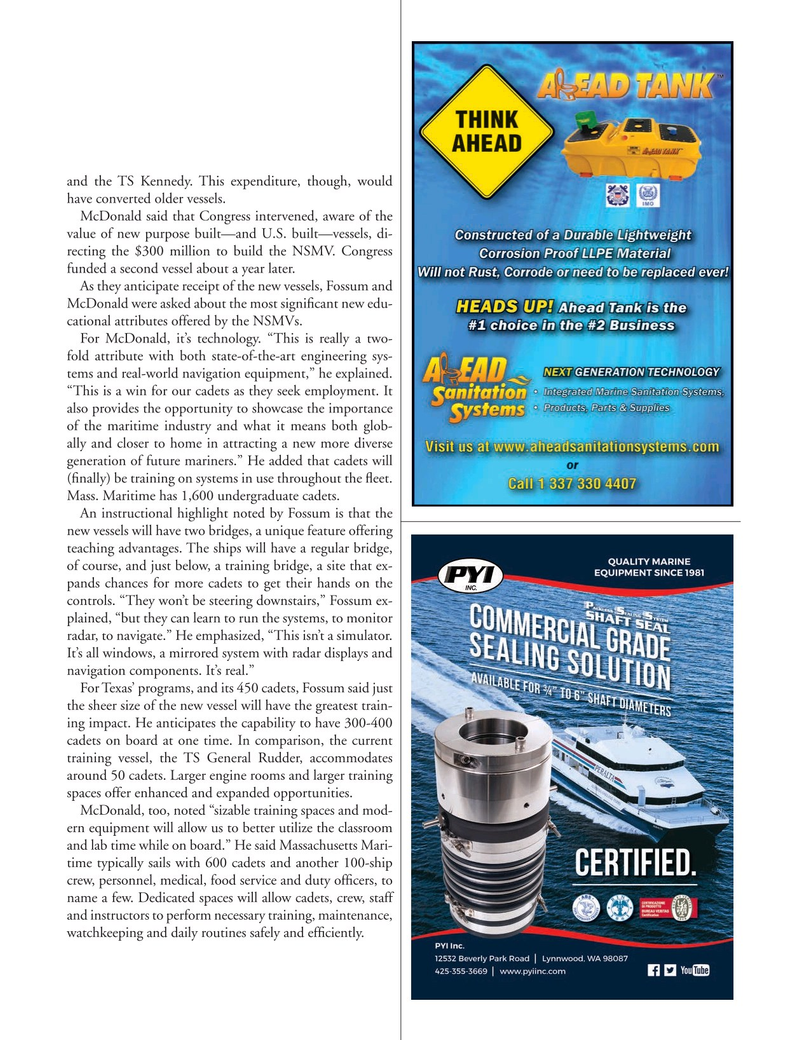
Page 31: of Marine News Magazine (March 2021)
Pushboats, Tugs & Barges
Read this page in Pdf, Flash or Html5 edition of March 2021 Marine News Magazine
and the TS Kennedy. This expenditure, though, would have converted older vessels.
McDonald said that Congress intervened, aware of the value of new purpose built—and U.S. built—vessels, di- recting the $300 million to build the NSMV. Congress funded a second vessel about a year later.
As they anticipate receipt of the new vessels, Fossum and
McDonald were asked about the most signi? cant new edu- cational attributes offered by the NSMVs.
For McDonald, it’s technology. “This is really a two- fold attribute with both state-of-the-art engineering sys- tems and real-world navigation equipment,” he explained. “This is a win for our cadets as they seek employment. It also provides the opportunity to showcase the importance of the maritime industry and what it means both glob- ally and closer to home in attracting a new more diverse generation of future mariners.” He added that cadets will (? nally) be training on systems in use throughout the ? eet.
Mass. Maritime has 1,600 undergraduate cadets.
An instructional highlight noted by Fossum is that the new vessels will have two bridges, a unique feature offering teaching advantages. The ships will have a regular bridge, of course, and just below, a training bridge, a site that ex- pands chances for more cadets to get their hands on the controls. “They won’t be steering downstairs,” Fossum ex- plained, “but they can learn to run the systems, to monitor radar, to navigate.” He emphasized, “This isn’t a simulator.
It’s all windows, a mirrored system with radar displays and navigation components. It’s real.”
For Texas’ programs, and its 450 cadets, Fossum said just the sheer size of the new vessel will have the greatest train- ing impact. He anticipates the capability to have 300-400 cadets on board at one time. In comparison, the current training vessel, the TS General Rudder, accommodates around 50 cadets. Larger engine rooms and larger training spaces offer enhanced and expanded opportunities.
McDonald, too, noted “sizable training spaces and mod- ern equipment will allow us to better utilize the classroom and lab time while on board.” He said Massachusetts Mari- time typically sails with 600 cadets and another 100-ship crew, personnel, medical, food service and duty of? cers, to name a few. Dedicated spaces will allow cadets, crew, staff and instructors to perform necessary training, maintenance, watchkeeping and daily routines safely and ef? ciently.

 30
30

 32
32
